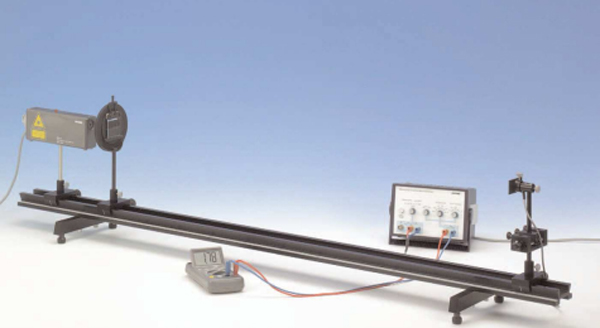Diffraction intensity at a slit and at a wire – Babinet’s theorem

An aperture consisting of a single slit and a complementary strip (wire) is illuminated with a laser beam. The corresponding diffraction patterns are measured according to position and intensity with a photocell which can be shifted.
- surprisingly a slit and a wire show basically the same diffraction pattern
- measurements prove a theorem that sounds awkward at first glance
- sturdy setup allows good reproducability of results
Object holder, 5×5 cm
Laser, He-Ne, 0.2/1.0 mW, 230 V AC
Optical bench expert, l = 1500 mm
Base for optical bench expert, adjustable
Slide mount for optical bench expert, h = 30 mm
Screen, with diffracting elements
Sliding device, horizontal
Si-Photodetector with Amplifier
Control Unit for Si-Photodetector
Digital multimeter 2005
Connecting cord, 32 A, 750 mm, red
Connecting cord, 32 A, 750 mm, blue
Adapter, BNC-plug/socket 4 mm
- Determination of the intensity distribution of the diffraction patterns due to a slit and complementary strip (wire).
- Determination of the intensity relations of the diffraction pattern peaks for the single slit.
- Babinet’s theorem is discussed using the diffraction patterns of the slit and the complementary strip.
- Huygens’ principle
- Interference
- Fraunhofer und Fresnel diffraction
- Babinet’s theorem
- Poissons’ spot
- Coherence
- Laser
